African violets, or Saintpaulia ionantha according to the University of Minnesota, are very popular houseplants. Their furry leaves and voluminous purple, pink, white, and blue flowers are quite a sight.
While not true violets, they get their name due to their resemblance to violets. These flowers are native to Tanzanian and Kenyan rainforests in East Africa.
Even when low-light tolerating and easy in their care, African Violets are still vulnerable to underwatering.
Table of Contents
How to Tell If My African Violet Is Underwatered?
Downward curling, dull, discolored drooping leaves are the primary symptoms of an underwatered African Violet. The foliage will become frail and soggy. If you find the soil dry with cracks and gaps, and if the pot feels too light, you can tell your African Violet is underwatered.
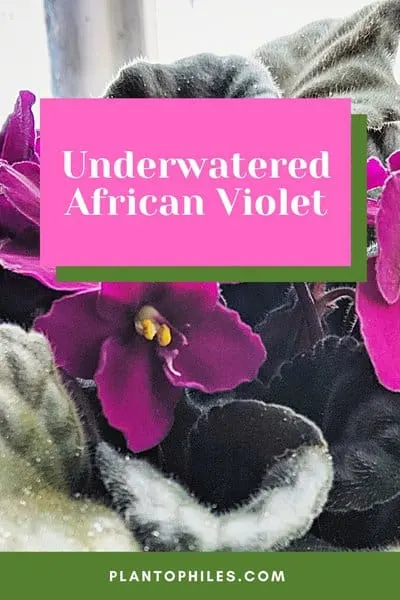
5 Symptoms of and Underwatered African Violet
African Violet plants cannot tolerate dehydration for extended periods of time. Hence, it is wise to keep watching out for tell-tale signs.
Take note of the following symptoms explained in detail to identify if your plant is dehydrated:
1. Droopy, Dull, Downward-Curling Leaves
Dehydration results from underwatered plants’ protracted lack of moisture in their tissue. The African Violet leaves will curl, appearing drooping and lifeless.
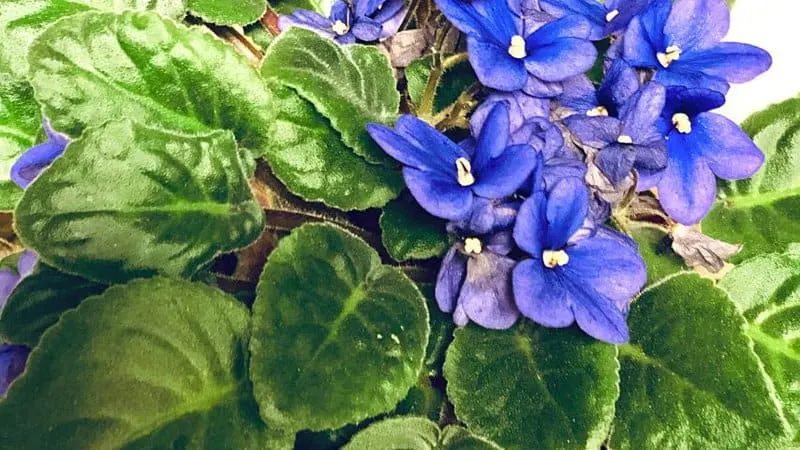
Other reasons for droopy leaves include extreme heat, overfertilization, and extremely low temperature.
It is possible that the African violet needs water as it is too dry. On the other side, wilted leaves can also be a sign of overwatering your African violet.
This happens if the African violet is excessively watered, especially if it’s housed inside a plastic pot.
The soil in plastic pots is known to retain more moisture than those in clay pots, or when they’re placed in a cold room.
This is especially true when you grow your African violets in areas receiving low light and have colder winter temperatures.
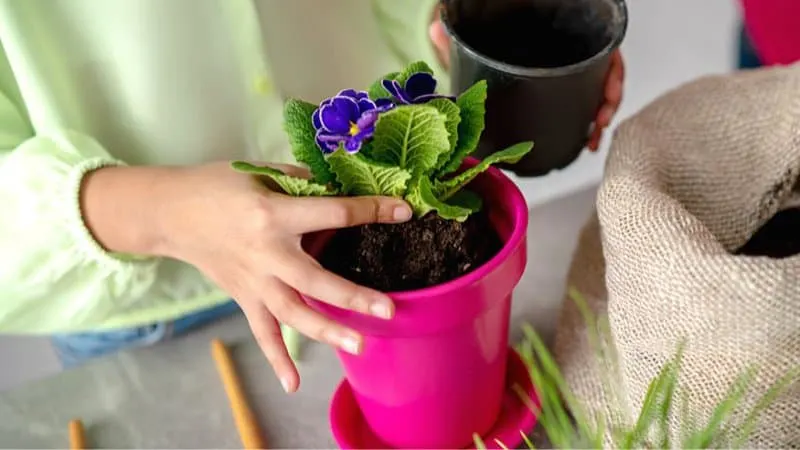
When the African violet is placed in a container too large for its roots, the soil retains more moisture for too long, which leads to root rot.
2. Weak, Frail Foliage
African violets that are not adequately watered will grow foliage that is dull and crisp. Additionally, just like us, when it gets chilly, they huddle and tighten themselves to conserve heat.
They also need water to generate this heat — the huddling is essentially a failsafe.
Your African violets are not warm enough if their leaves are curling under and becoming brittle. Additionally, your plant may have developed extra “fur” on its leaves as a form of defense.
All of this results in the plant becoming weak and fragile.
Exposure to harsh externalities could result in the plant dying eventually. To prevent this from happening, you need to identify the brittleness and come up with a watering schedule as soon as possible.
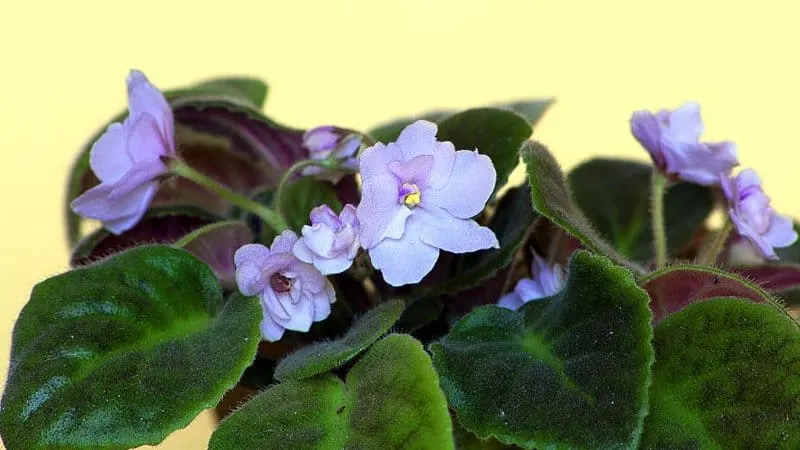
3. Dry and Arid Soil
The presence of crumbly, bone-dry soil suggests that the plants have long since used up all of the moisture in their surroundings.
The tips of your African violet’s leaves may be burned, dry, or crumbly if they lack moisture and the soil is dry.
Better act fast if you see your African Violet leaves becoming brown due to necrosis, which is irreversible cellular damage, that can readily occur on its leaves.
Underwatering, excessive sunlight, or dry air often leads to a lack of moisture for your African violets.
You can typically find African violets in mossy woodlands that have heavy canopies.
These plants do well when you place them in bright (but not direct sunlight as it leads to dry soil) and humid environments.
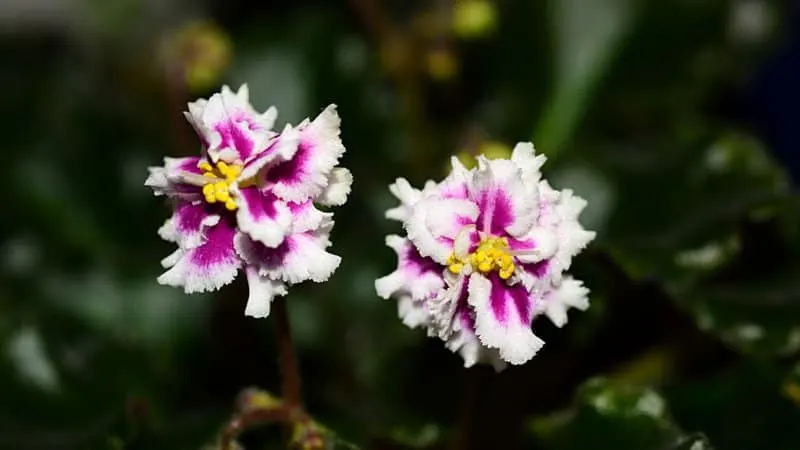
4. Cracks and Gaps in Soil
Severe underwatering can cause a plant’s soil to shrink and pull away from the pot’s sides in addition to drying out. You’ll then notice a space building up between the pot’s inside with its edges.
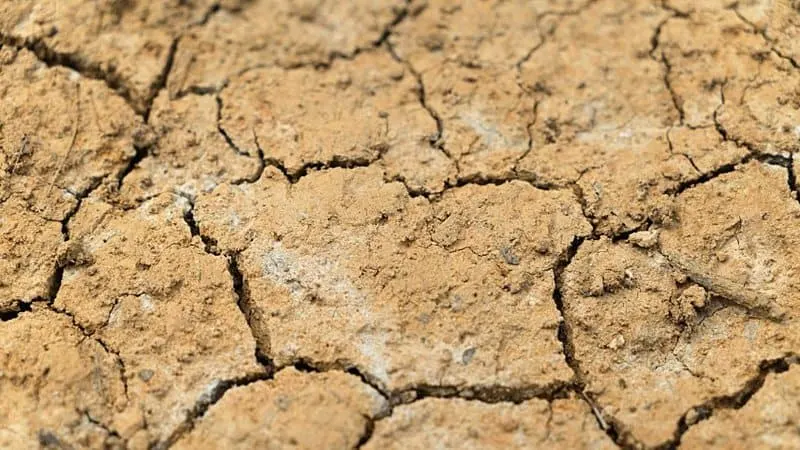
The soil should be rich.
Make sure you have an airy potting mix for African Violets. The majority of garden centers sell special soil for African Violet plants.
Every six to twelve months, give these plants some new, fresh soil. By altering the soil, undesirable salts from fertilizers are prevented from accumulating and scorching the roots and leaves.
However, not taking care of your soil can result in cracked soil with gaps.
5. Lightweight Pot
Another sign that there is no moisture at all in the soil is if you lift the plant container, and it feels incredibly light. Lightweight pots mean that your plant is underwatered.
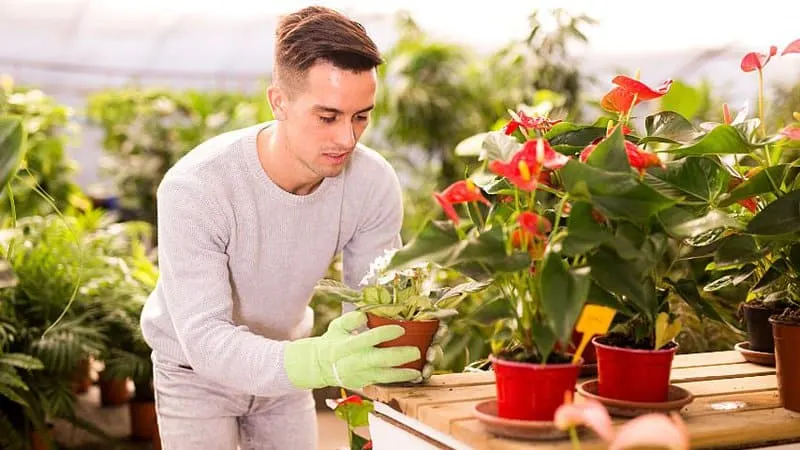
The soil loses moisture, and they harden, ironically losing weight. The roots dry up, and the plant eventually dies.
The lightweight pot is an indicator that your African Violet is in need of water.
Saving an Underwatered African Violet Plant
You want to ensure that your African Violet is watered adequately. For healthy growth, try sticking to one watering schedule only.
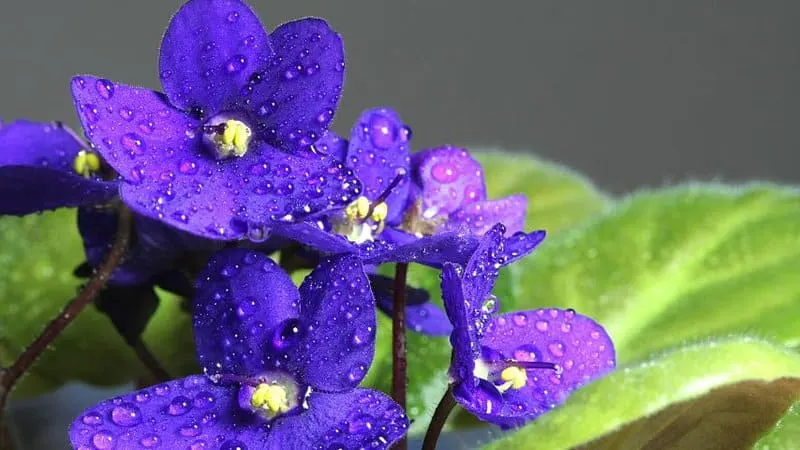
The soonest one of the symptoms appears, act as quickly as you can. Act late or poorly, and the symptoms will spread.
Follow the steps below to save your African Violet.
1. Damage Assessment
It’s important to assess the damage your underwatered African violet has sustained.
If only a few of the African violet’s leaves have brown spots, but its stems are robust, there’s no need to restore it extensively as much as if the disease is widespread.
Feel free to skip any stages that don’t relate to your plant from the list below until they do. No need to remove the unhealthy roots, etc., if your roots are healthy.
2. Removal of Damaged Leaves
Eliminate any yellow or brown-spotted foliage or wilted blossoms. They should recover themselves as you modify the water’s temperature.
By removing the damaged leaves, your African violet can concentrate on recovering.
It is no longer necessary to use energy to provide nutrients to parts of the plant that cannot be revived.
First, don’t forget to wash your hands. Then, remove the damaged blossoms and leaves by pinching the leaf close to the stem’s base, using your fingers to remove damaged leaves and blossoms.
Make sure your scissors are clean and sharp if you decide to snip the leaves off.
3. Make Adjustments to the Soil
Numerous problems with the soil and root system result from underwatering.
Before you can start to mend your soil, you must first understand its state. Eliminate any soil-borne mold growth.
Then remove your African Violet from its pot so you can look at the root structure.
This is a great time to give your pot additional drainage — however, do not add too much, as it beats the purpose.
Large rocks, broken pieces of terra cotta pottery, and recycled plastic are all effective. Just make sure to add these to the pot’s bottom before repotting your African violet for the water to easily drain through the soil.
Frequently Asked Questions About Underwatered African Violet
How Often Should I Water My African Violet?
Once weekly, or whenever the soil’s top inch is dry, water the bottom of your African violet. Make sure to place your African violets in a tray with water or a saucer, making sure to water them from the bottom. Remove the plant and let it drain after letting it soak in the water for 10-15 minutes.
Can I Mist My African Violet?
You can. African violets are capable of enduring indoor humidity ranging from 40-60 %. If your home, unfortunately, is excessively dry, daily misting with room-temperature water is best. Just don’t mist in the middle of the day or at night.
Is My African Violet Underwatered?
If the soil is wet, it either contains more moisture than your plant can absorb, or the soil is too dense for your plant’s roots to absorb water effectively. The quickest method of checking whether your African Violet is underwatered is to do a soil check.
Conclusion About Underwatered African Violet
An underwatered African Violet will be discolored with droopy leaves. A light pot, as well as dry soil, are further indicators that an African Violet is underwatered. To remedy the situation assess the damage to the plant, remove damaged leaves and make adjustments to the soil if necessary. Water lightly at first and stick to a watering routine.

Daniel has been a plant enthusiast for over 20 years. He owns hundreds of houseplants and prepares for the chili growing seasons yearly with great anticipation. His favorite plants are plant species in the Araceae family, such as Monstera, Philodendron, and Anthurium. He also loves gardening and is growing hot peppers, tomatoes, and many more vegetables.


